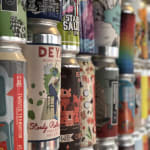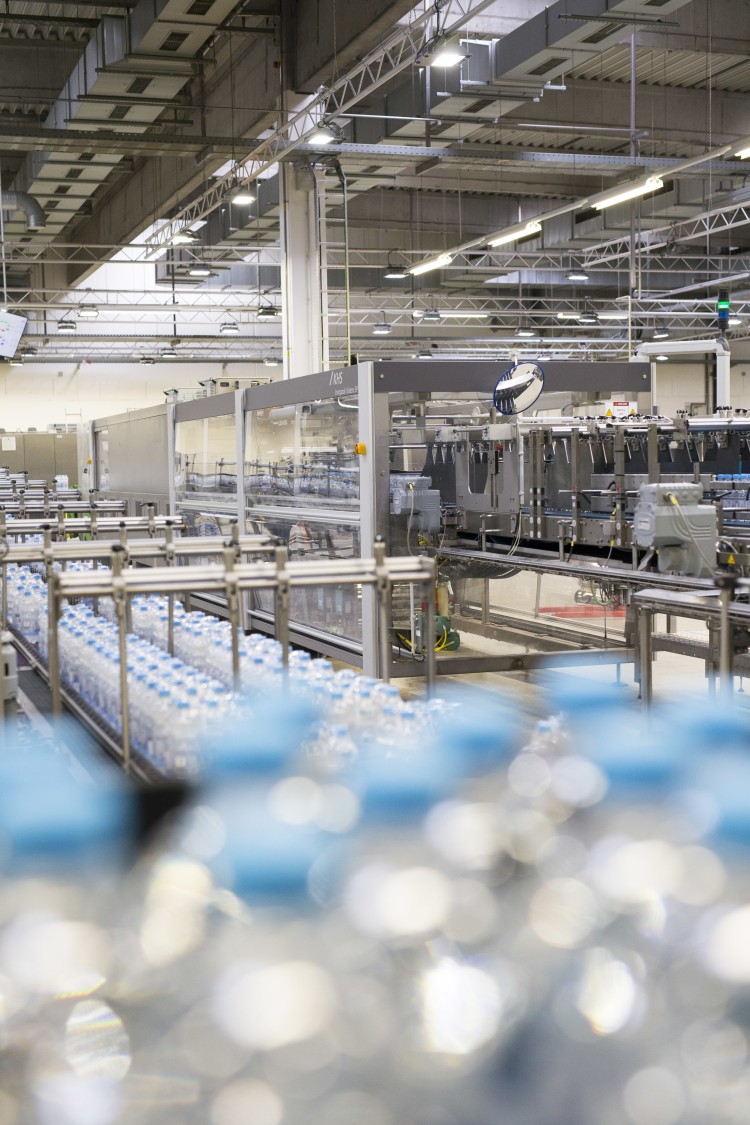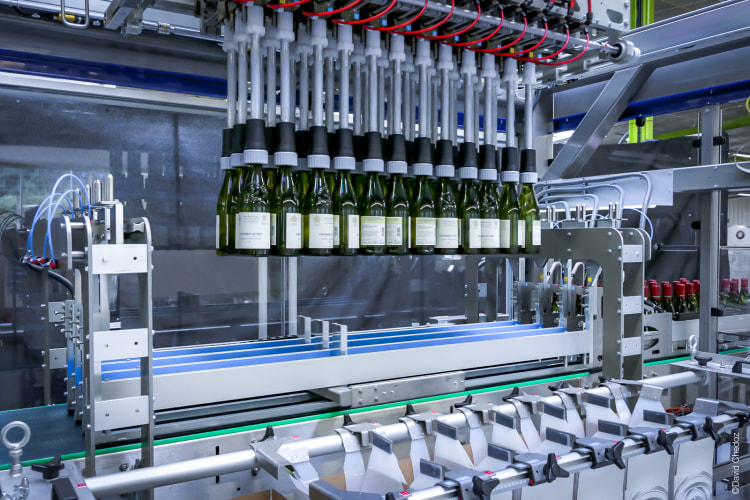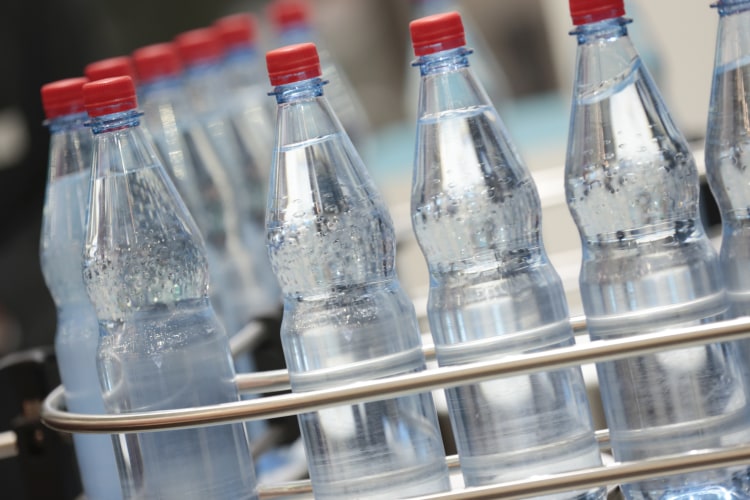
The perspectives for the global beverage industry are excellent, as data provided by British market research institute Euromonitor International and the VDMA Food Processing and Packaging Machinery Association shows. According to this data, 947 billion litres of beverages were consumed globally in 2018. By 2023, the demand is expected to increase even further – by 16.3 percent to over one trillion litres (1,101 billion litres).
As global population increases, so do beverage sales. This growth is especially apparent in emerging national economies, known as the BRICS states. These include Asian, Latin American or African, countries in which the population has a high pent-up demand for consumer goods.

The beverage industry is among the most important sales markets for packaging machines. Photo: KHS GmbH
Rising export figures
Accordingly, the global demand for filling machines has also increased. According to VDMA statements, filling and capping machines worth over 7.4 billion euros were exported around the globe in 2018, 3.6 percent more than in 2017. The beverage industry accounts for a high share of these exports. Germany is the export world champion. The country exported filling and capping machines worth more than 2.3 billion euros in 2018. This is equivalent to an increase of five percent compared to 2017. Italy is right behind in second place, with an export value of more than 1.4 billion euros. This number has increased slightly, by about 0.3 percent compared to 2017.
German production of beverage filling machines reached 2.2 billion euros (an increase of 1 percent) in 2018, whilst production of beverage manufacturing machines reached 552 million euros – an increase of 6.7 percent compared to 2017.
Changed consumption conditions
Global consumption of beverages has increased; at the same time, beverages are now being consumed in a completely different manner. Consumer demands regarding the quality and sustainability of products and packaging have increased. Customers today are both well-informed and sensitised. When selecting products, they tend to make more conscious decisions and attach greater importance to ingredients and their origins. As a result, many consumers are actually prepared to pay more for regional and hand-made products.

As the selection of available beverages increases, machines and equipment are expected to be more and more flexible. Photo: Melanie Streich
The increase in out-of-home consumption and the desire for more convenience has lead to a rising demand for individual beverages in light-weight packaging and smaller batches.
Furthermore, the share of consumers that belong to the 50+ generation is higher than average in the field of beverages, with almost 40 percent[1]. In future, these Best Agers will become more and more important as a target group for beverage suppliers. Low-calorie, high-quality and healthy beverages are extremely popular. At the same time, the Silver Generation expects packaging to be designed in a way that makes them easy to open and just as easy to reseal.

Flexible format changes in just ten minutes combined with modern product-flow management ensure that bottles can be packaged in a more flexible and user-friendly manner. Photo: Sidel
Demands on the industry
Flourishing markets invariably promote more competition and intensify the pressure beverage manufacturers are already under; these face fluctuating prices for raw materials as well as a considerable price competition in the food retail trade. This calls for energy-efficient, resource-conserving and flexible solutions for a closed circular economy.
The beverage industry needs to be able to react to the continually changing demands of consumers and trade by providing a variety of products in increasingly shorter intervals. This requires continuous, new product modifications as well as new developments, combined with specific marketing measures for different target groups.
In this area, digital printing provides maximum flexibility. Marketing strategies can be implemented over night, without having to worry about first using up bottle labels currently in stock. The printing process can be used on the new virgin PET as well as on rPET, and uses inks that can be removed from the PET without any residue during recycling.
The beverage industry as well as the associated process and packaging industries are excellently positioned to meet these rising challenges, and offer numerous innovations with regard to machine availability, production and process optimisation as well as the use of digital solutions and Industry 4.0 measures.

The field of beverage packaging and processes is an important component of interpack 2020. Hall 13 is a key area. Photo: Messe Düsseldorf, Constanze Tillmann.
These will be exhibited at the upcoming interpack, which will take place in Düsseldorf from 7 to 13 May 2020. A total of 1,544 exhibitors have confirmed that they will be presenting solutions for the beverage industry – including the latest developments along the entire machine and equipment value chain, from various types of containers to materials and recycling. Hall 13 is a key area.



